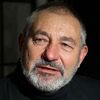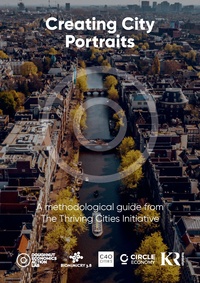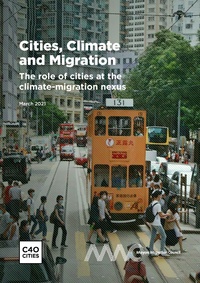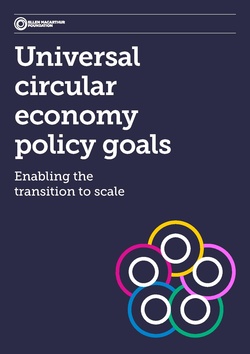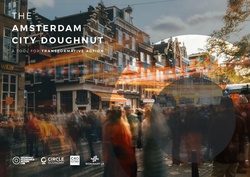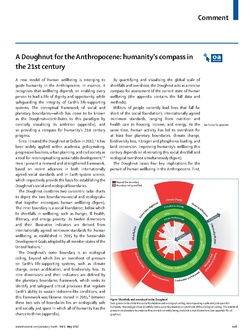Wellbeing: Difference between revisions
No edit summary |
No edit summary |
||
| Line 1: | Line 1: | ||
{{Book | |||
| blueprint = Wellbeing | |||
| sectors = Wellbeing | |||
| authors = Stan Curtis | |||
| poc = Stan Curtis | |||
| email = stan.curtis@urban.systems | |||
| document = Under_Development.pdf | |||
| chapter = 900 | |||
| image = WellbeingChapter.png | |||
| summary = Wellbeing refers to a state of being happy, healthy, and comfortable in one's life. It encompasses a range of physical, mental, and emotional factors, and can be influenced by a variety of factors such as genetics, environment, and personal choices. | |||
}} | |||
Physical well-being includes elements such as having enough energy, feeling good in one's body, and being free from illness or injury. Mental well-being includes elements such as having a positive outlook, feeling able to cope with stress, and having a sense of purpose or meaning in life. Emotional well-being includes elements such as feeling content and satisfied, and having supportive and positive relationships. | |||
Overall, well-being is a multi-faceted concept that includes many different aspects of a person's life. It can be influenced by a variety of factors including the physical environment, social support, work-life balance, and personal choices. People can work on improving their well-being by making healthy choices, staying active and engaged, and by seeking support when needed. | |||
In order to allow analysis of a wide range of ethical decision problems, any version of a coherent individualistic ethical decision theory requires some ideal index indicating the ethical value of each individual’s life. It seems reasonable that this index should be related to wellbeing. In fact the values involved in determining well-being might still form part of an ideal value index, but only after they have been suitably repackaged. But it would appear that a satisfactory ethical value index must transcend any of the commonly accepted notions of wellbeing.</br>''Peter J. Hammond, Department of Economics, Stanford University'' | |||
=Introduction= | |||
SmartCITIES::BeyondGDP... SmartBUILDING? community-by-community | |||
Economic Development city-by-city initially was framed as a technology challenge..a smarter better digital INFRASTRUCTURE? | |||
the rapid incubation of technology choices... lamppost-by-lamppost continuously updated expectations for ACCESS to better choices! | |||
Community-by-community ...the EU and WEFORUM cultivated a more regenerative process ...improving WELLBEING (weal-th) | |||
https://www.weforum.org/focus/beyond-gdp | |||
=Additional Material= | |||
You can enter a PDF as a link | |||
[[Media:2409-ArticleText-3132-1-10-20200408.pdf|Doughnut Economics]] | |||
Or you can add a PDF as an image | |||
[[File:Creating-City-Portraits-Methodology.pdf|200px|City Portraits]] [[File:C40 Cities and Mayors Migration Council (2021) Cities, Climate and Migration - The role of cities at the climate-migration nexus.pdf|200px|Cities, Climate and Mitigation]] | |||
{{Sector | {{Sector | ||
| image = Wellbeing200.png | | image = Wellbeing200.png | ||
Revision as of 00:17, January 20, 2023
| Wellbeing | ||||||||||||||||
|---|---|---|---|---|---|---|---|---|---|---|---|---|---|---|---|---|
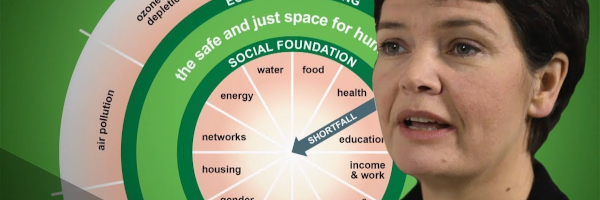
| ||||||||||||||||
| Introduction | ||||||||||||||||
| Contact | Stan Curtis | |||||||||||||||
| Topics | ||||||||||||||||
NEWS
REPORTS | ||||||||||||||||
- Authors
Wellbeing refers to a state of being happy, healthy, and comfortable in one's life. It encompasses a range of physical, mental, and emotional factors, and can be influenced by a variety of factors such as genetics, environment, and personal choices.
Physical well-being includes elements such as having enough energy, feeling good in one's body, and being free from illness or injury. Mental well-being includes elements such as having a positive outlook, feeling able to cope with stress, and having a sense of purpose or meaning in life. Emotional well-being includes elements such as feeling content and satisfied, and having supportive and positive relationships.
Overall, well-being is a multi-faceted concept that includes many different aspects of a person's life. It can be influenced by a variety of factors including the physical environment, social support, work-life balance, and personal choices. People can work on improving their well-being by making healthy choices, staying active and engaged, and by seeking support when needed.
In order to allow analysis of a wide range of ethical decision problems, any version of a coherent individualistic ethical decision theory requires some ideal index indicating the ethical value of each individual’s life. It seems reasonable that this index should be related to wellbeing. In fact the values involved in determining well-being might still form part of an ideal value index, but only after they have been suitably repackaged. But it would appear that a satisfactory ethical value index must transcend any of the commonly accepted notions of wellbeing.
Peter J. Hammond, Department of Economics, Stanford University
Introduction
SmartCITIES::BeyondGDP... SmartBUILDING? community-by-community Economic Development city-by-city initially was framed as a technology challenge..a smarter better digital INFRASTRUCTURE?
the rapid incubation of technology choices... lamppost-by-lamppost continuously updated expectations for ACCESS to better choices!
Community-by-community ...the EU and WEFORUM cultivated a more regenerative process ...improving WELLBEING (weal-th) https://www.weforum.org/focus/beyond-gdp
Additional Material
You can enter a PDF as a link Doughnut Economics
Or you can add a PDF as an image
| Wellbeing | |
|---|---|
 Wellbeing | |
| Team Members | Urban.Systems Ellen Macarthur Foundation |
| Blueprint | Wellbeing |
These 28 projects are managed by the wellbeing team with the objective of bringing together governments, commercial partners, university researchers and NGOs to remove the technical barriers to broad deployment of socially beneficial services. For an understanding of the outcomes we are striving to achieve see the work of the Ellen MacArthur Foundation exploring the circular economy and Kate Raworth balancing essential human needs and planetary boundaries.
Chair(s)
Activities

|
Breaking the Code The UN-hackathon | |
| Multnomah County, Oregon is partnering with Technology Association of Oregon (TAO) and other local groups to host a community collaborative problem solving event and an ongoing, community-based technology incubator called Breaking the Code.
We aim to break some of the barriers that exist among organizations that specifically serve people of color and the broad, local tech community. Partnering together gives us a platform to bridge the gap between the two and provide opportunities for Community Based Organizations (CBO’s) to become more efficient and effective in their targeted service delivery. A longer term goal is the creation of community-based and community-led technology start-ups. Breaking the Code’s framework leverages assets from the public sector (data, staff, technology platforms, public infrastructure, small business incubation, etc.), and the technology industry (technology solutions, expertise, professionals, funding, etc.) with the goal of making CBOs more successful serving their community. This, in turn, fulfils the promise of smart cities as “thriving communities” with well being across the life span, equity and access, sustainability, resiliency, and vibrant arts and culture. | ||

|
CIVIC school HUBS | |
| NSF CIVIC grant to incubate the Federal School Infrastructure Toolkit for more resilience Community services. A pilot program with be developed with the BENSON school district in Portland, and woven into the urban/rural network of the Metro regional emergency response. | ||

|
COVID Calculator | |
| The COVID Calculator determines whether you’ll quarantine or isolate, and for how long. | ||

|
Complete Neighborhoods — Building a Healthy Connected City | |
| The goal of the Healthy Connected Neighbourhood Strategy is to bring complete neighbourhoods to 80% of the city’s population by 2035. The Strategy is integrated into the main Portland Plan, a comprehensive strategic plan to achieve urban equity and sustainability. | ||

|
Denver CO Built for Zero | |
| Denver, Colorado participates in the Built for Zero program, a national movement dedicated to measurably ending homelessness, using a data-driven approach. The Metro Denver Homeless Initiative (MDHI) leads the region's efforts, which involves seven counties and 40 municipalities, by coordinating local planning and utilizing a shared Homeless Management Information System (HMIS) to gather real-time data. The region aims to reach "functional zero," meaning the number of people experiencing homelessness is less than or equal to the community's capacity to house them, starting with veterans as a proof point. Denver focuses on using this data to understand the dynamics of homelessness in the region, improve strategies, and address racial inequities within the homeless response system. | ||

|
DigiTel Resident Card | |
| The City of Tel Aviv has undergone a transformation to become a “smart city” that uses technology to improve the City Hall administration and its citizens’ lives. Through programs such as the DigiTel Residents Club and the DigiTel mobile application, Tel Aviv offers innovative electronic services to its population and is searching ways to make citizens interested in how the city works. Throughout the process, Tel Aviv has worked closely with Microsoft to find the best ways to achieve its vision of a smart city. | ||

|
Dwellingly | |
| Dwelling.ly is an app to improve communication between the landlord providing transitional housing and the social workers who support them. | ||

|
Family CARE - Caregiver 2.0 | |
| Presence Caregiver learns daily activity patterns and can warn caregivers, family members and friends about incidents of concern with text alerts of potential hazards including falls, water leaks and wandering. | ||

|
Fast Wi-Fi boost for Copr Bay | |
| Fast and reliable Wi-Fi technology is being introduced in Swansea's emerging new Copr Bay district, letting thousands of people stream content at the same time to their mobile devices. | ||

|
Global Organization of Smart Cities GO SMART | |
* Currently many cities in the world are facing similar challenges and have therefore developed their own Smart City strategy and are running their own Smart City projects. Considering the similarity of the challenges, there lies huge potential in effective knowledge exchange and collaboration.
| ||

|
Green Horizons: Urban Workforce Development and Electrification Center | |
| The Green Horizons Workforce Development and Vehicle Electrification Center is pursuing a planning grant that aims to establish a positive sustainable economic impact for the Multnomah County Drainage District community. This project will produce an assessment plan for a combined workforce training and commercial grade EV fleet conversion facility. | ||

|
Hello Lamp Post UBC Campus | |
| Initially launched as a pilot project, Hello UBC was designed to innovatively engage students and staff on campus, to support the parking and access services team. Their goal was to communicate key messages and gain insights into the behaviours of commuters and visitors around campus. | ||

|
Kashiwanoha Smart City Project | |
| The Kashiwanoha smart city project (first described as Kashiwanoha International Campus Town Initiative) is a planned from scratch city project, involving a greenfield smart city vision, situated around Kashiwanoha Campus Station. Kashiwonoha smart city project is a privately-led project, with Mitsui Fudosan as the main developer. It was also the owner the previous owner of the golf course on which construction work of the project were first based. However, Kashiwa city was designated as one of the "FutureCities" by the national government in 2011, making Kashiwanoha new town project eligible for government subsidies. | ||

|
My Digital Data Locker Baltimore | |
| For those staying in a shelter or shuttling between other people’s homes, keeping track of these vital documents can be near impossible. They also can be lost, destroyed or stolen.
Recognizing that this was blocking some people from securing stable housing, the city of Baltimore this year launched an innovative program — My Digital Data Locker — to help people store and keep track of key documents. | ||

|
OMSI Development | |
| The OMSI Consortium is soliciting subject matter experts and qualified vendors to participate in a series of short virtual workshops during the months of October-December 2020, culminating in a Q1 2021 Request for Proposal (RFP) to build a showcase integrated district infrastructure solution to serve the Oregon Museum of Science and Industry’s 23-acre site with the potential to develop up to 3 million square feet of new, low-carbon, mixed-use construction in Portland’s Central City Plan District. Workshop details will be released to confirmed participants. | ||

|
Oregon Digital Safety Net | |
| Digital communications are necessary to participate in mainstream life today.
Those of us who are fortunate enough to be employed, housed, and reasonably healthy and stable, financially and emotionally, know how dependent we are on our digital devices to navigate our daily lives. | ||

|
Reconnect Rondo | |
| The ReConnect Rondo project is a transformative initiative aimed at restoring and revitalizing the historic Rondo community in Saint Paul, Minnesota, which was devastated by the construction of Interstate 94 in the mid-20th century. At its core, the project envisions creating Minnesota’s first African American cultural enterprise district, anchored by a community land bridge that reconnects Rondo’s past vibrancy with a future of economic and social equity. This ambitious effort seeks to rectify historical wrongs, restore wealth and control to African American residents, and foster opportunities for businesses, housing, and leadership development within the community. Through collaborative partnerships with leaders, organizations, and policymakers, ReConnect Rondo is committed to ensuring equitable development, preventing gentrification, and creating a national model for restorative justice and sustainable community revitalization. | ||

|
RecordSponge Oregon | |
| RecordSponge is software that helps community organizations quickly analyze an individual’s criminal history to determine if they qualify to have their records expunged. | ||

|
Regenerative Urbanism Vanport | |
| Vanport, Oregon was a temporary housing project built in 1942 to address a wartime housing shortage in Portland. | ||

|
Resilience HUB - East Multnomah | |
| Resilience Hubs are community-serving facilities augmented to support residents and coordinate resource distribution and services before, during, or after a natural hazard event. They leverage established, trusted, and community-managed facilities that are used year-round as neighborhood centers for community-building activities. Resilience Hubs can equitably enhance community resilience while reducing greenhouse gas emissions and improving local quality of life for our communities. They have the potential to reduce burden on local emergency response teams, improve access to public health initiatives, increase the effectiveness of community-centered institutions and programs. | ||

|
Resilience HUB - NIST Guide | |
| Natural, technological, and human-caused hazards take a high toll on communities, but the costs in lives, livelihoods and quality of life can be reduced by better managing disaster risks. Planning and implementing prioritized measures can strengthen resilience and improve a community's abilities to continue or restore vital services in a more timely way, and to build back better after damaging events. That makes them better prepared for future events and more attractive to businesses and residents alike. | ||

|
Resilience HUB - Vibrant Hawaii | |
| A goal of the Resilience Hub initiative is to build individual capacity and community networks to be resilient and ready for anything. To get there, Vibrant Hawai'i hosted a Resilience Leadership Academy (RLA) - a monthly development program with curated content by local experts. | ||

|
Rose City Resource | |
| The Street Roots Rose City Resource (RCR) is a 4’x 4′, 104 page guide that is the most comprehensive, updated list of services for people experiencing homelessness and poverty in Multnomah, Washington and Clackamas counties. | ||

|
School Organized Locally Assisted Community Emergency‐Management | |
| The School Organized Locally Assisted Community Emergency‐Management (SOLACE) project focused on the use of a community school as a community resilience hub for its surrounding community. Community Resilience Hubs (CRHs) can be defined as community‐serving facilities augmented to support residents and coordinate resource distribution of resources and services to the surrounding community. This project focused specifically on the use of a CRM to support community member needs before, during, or after a natural hazard event and on developing a community‐led sociotechnical infrastructure framework for adapting a public school (Buckman Elementary School) as the pilot CRH. In 2022, this project received a NSF Planning Grant. | ||

|
Small Donor Elections | |
| The Small Donor Elections program seeks to reduce the influence of money in politics and encourage election of people to City office who are reflective of and accountable to all Portlanders. | ||

|
Southport development | |
| Southport is the only full-building solution available in the Greater Puget Sound area. As you enter Southport on Lake Washington you will quickly realize you are in a unique place. The entire campus has been designed with a focus on a lifestyle environment that supports the development of great teams. | ||

|
State of Place City of Tigard | |
| Prior to using State of Place, Tigard did not know where to begin in their data-driven walkability plan for their Tigard Triangle project. The process was cumbersome and error-prone. The City needed a tool that could conduct objective, robust assessments of existing walkability of the Tigard Triangle, and offer impactful recommendations to increase public approval. | ||

|
World Smart Sustainable Cities Organization WeGO | |
| The World Smart Sustainable Cities Organization (WeGO), established by 50 founding member cities in 2010, is an international association of city and other local governments, smart tech solution providers, and national and regional institutions committed to the transformation of cities into smart sustainable cities.
A diverse range of activities include capacity building programs, sessions and smart city conferences and study visits, feasibility studies and pilot projects, expos and exhibitions, smart city guidelines and best practice catalogs. | ||
Webinars

|
Accessible Transportation | |
| Accessible Transportation Technologies Research Initiative (ATTRI) a division of the USDOT seeks to remove barriers to transportation by leveraging advanced technology to enable people to travel independently anytime of the day to any destination, regardless of their individual abilities | ||

|
Built For Zero | |
| Built for Zero is a national movement whose methodology and support network assists communities in their journey to end homelessness. Collaboration and testing of ideas to improve outcomes are at the heart of the Built for Zero continuous improvement approach that has proven itself in communities across the United States and Canada. | ||

|
Community Investment Trust | |
| The Community Investment Trust is a first-of-its-kind financial inclusion tool created to empower residents and strengthen communities. The CIT is designed to remove barriers to financial inclusion and provide a low-dollar investment opportunity in a commercial property to local residents. | ||

|
How By-Name Data Helps Communities End Homelessness | |
| The by-name list is a real-time, person-specific list of everyone experiencing homelessness. The by-name list provides communities with a full and real-time view of homelessness in their geography. Using this data, we will be able to triage individual cases, understand the broader patterns of homelessness in their community, and ensure that resources and efforts are driving down the overall number of people experiencing homelessness. | ||

|
Inventing the Platform and Path to Sustainability Success | |
| Regenerative urbanism creates a balance where buildings, their occupants and the surrounding systems, both natural and man-made, work together to create resources rather than deplete them. Research shows that the integration of regenerative elements can yield greater returns over time. This approach uses dynamic governance systems to monitor and share the costs and benefits of urban life. It allows for multiple objectives to be achieved, from managing water and reusing waste biproducts to optimizing renewable resources across compact communities in new ways. | ||

|
Place Standard | |
| The Place Standard tool provides a simple framework to structure conversations about place. It allows you to think about the physical elements of a place (for example its buildings, spaces, and transport links) as well as the social aspects (for example whether people feel they have a say in decision making). | ||

|
The Library of Things at Clackamas County Libraries | |
| Eight Clackamas County public libraries have opened a "LIbrary of Things". Learn more about a "Library of Things and the eight Clackamas County Libraries that have opened one. | ||

![link=[[Media:{{{Release}}}]]](/images/thumb/9/92/Brookings.jpg/200px-Brookings.jpg)








